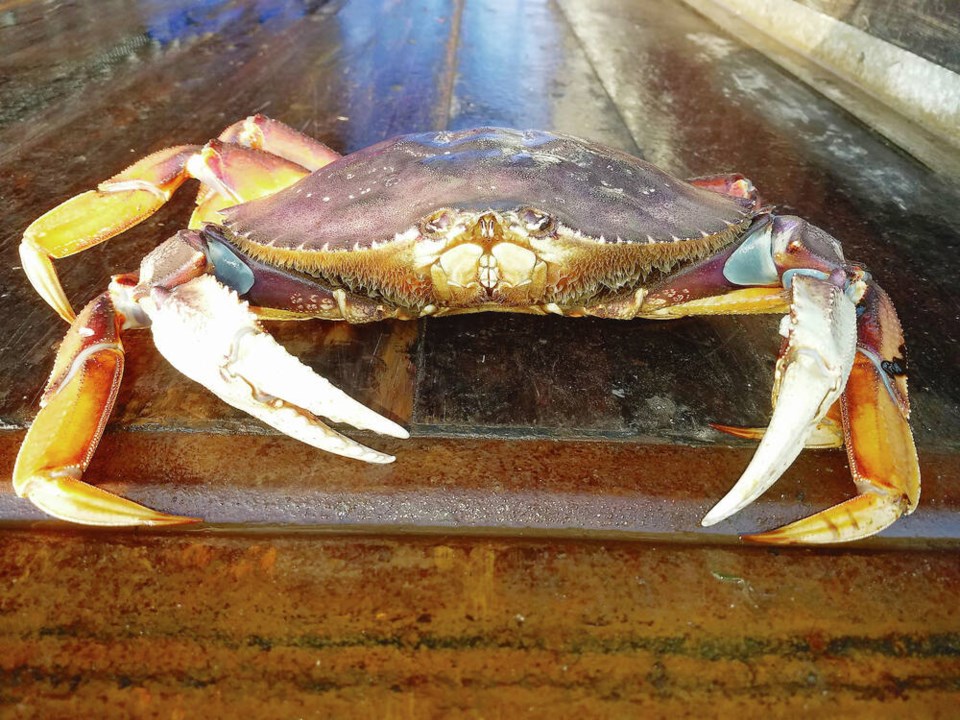Late last year, researchers from the London School of Economics and Political Science released a U.K. government–commissioned report concluding strong evidence that some invertebrates are sentient.
Sentience is having the ability to experience emotions and feelings. The ability requires a level of awareness and cognitive ability.
Based on the evidence presented in more than 300 scientific studies, the researchers recommended that the U.K. government recognize all octopuses, squid and other cephalopod molluscs and crabs, lobsters and similar decapod crustaceans as sentient animals under U.K. animal welfare law.
The authors’ conclusions suggest octopuses have some kind of memory-based inner lives and crabs can indeed be crabby.
Crabs and other marine critters native to sa国际传媒 certainly have good reason to ill tempered, peevish, and sullen.
The Dungeness crab and the razor clam are two of 12 economically and culturally important ocean species along the coast likely to be seriously impacted in multiple ways by climate change over the coming decades, McGill University researchers say.
The researchers modelled how climate is changing the environment within the massive ocean current that flows northwards from California to the outer coast of Vancouver Island. The changes, the researchers recently reported in the journal Global Change Biology, are having knock-on effects within the highly productive coastal marine ecosystem in that underwater ocean superhighway.
The researchers say the biggest responses will occur along the Washington and sa国际传媒 coast and in areas close to shore. The region could see substantial losses in kelp forests, declining survival of red urchins, Dungeness crab and razor clams, and losses of anchovy and pink shrimp habitat.
Dungeness crab is one of the most commonly caught crab species in sa国际传媒, accounting for about 99 per cent of the province’s commercially harvested crab.
Global carbon emissions drive three main marine stressors — ocean acidification, warming water temperatures and low oxygen levels. The study suggests acidification will have the biggest, most widespread impact on the species.
For centuries, the oceans have chemically buffered the impact of our increased greenhouse gas emissions. Carbon dioxide from the atmosphere dissolves naturally into sea water, exchanging atoms with water molecules to form carbonic acid, bicarbonate, carbonate, and hydrogen ions.
But it’s a delicate balance.
Shellfish and other organisms use ocean-water carbonate to build their shells and exoskeleton body armour. Yet as we pump more carbon dioxide into the atmosphere and the oceans continue absorbing and dissolving that atmospheric carbon dioxide, the more hydrogen ions are also produced.
The more hydrogen ions there are, the more acidic the water is and the lower its pH.
Ocean water is now about 30 per cent more acidic than it was 200 years ago. That acidity is predicted to increase by another 500 per cent by the end of the century if carbon emissions are not curbed.
Even a slight shift in pH could have widespread impacts. Coral reefs, shells and exoskeletons dissolve in acid. Marine critters would find it harder to build shells and body armour. Exoskeletons may be softer and less protective.
A 2020 study found that increased ocean acidity was already damaging the upper shells and the hair-like sensory structures that larval Dungeness crabs use to swim and avoid predators.
And there’s more to upset Dungeness crabs. In a study published by the American Geophysical Union, University of sa国际传媒icut researchers determined that all life stages of the Dungeness crab will be affected by ocean acidity, but low oxygen levels brought on by climate change will hammer adult crabs.
“Low oxygen events are confined to the upwelling season, in spring and summer, which impacts the adults,” says lead author Halle Berger.
Crabs mate in spring and produce eggs in late fall. The eggs begin to hatch in January, releasing larvae, which float in the offshore currents while growing, shedding and regrowing their shells several times.
The fully developed larvae return closer to shore in summer to moult and grow a new shell, thus becoming young, sharp-clawed adults.
The additional summer stress on adults is worrisome for the health of Dungeness crab populations in the region. If fewer adults survive, fewer crabs can reproduce and maintain the populations’ numbers.
It’s enough to distress even the happiest of razor clams.
It’s certainly enough to put the crabbiest of crabs into temper.



